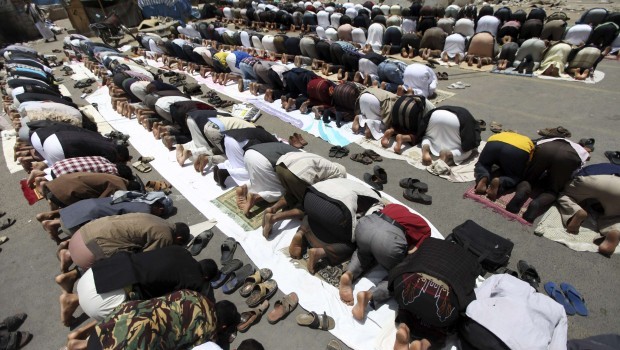It is undeniable that Islamic movements in the Gulf are engaging with the Arab Spring as part of their wider project. The “Islamic Awakening” that began in the 1980s was a kind of “rebirth” of religious sentiment among certain segments of the population; it entailed not only personal discovery of Islam but also a growing feeling that the Islamic way of life should be more fully incorporated into society and government. The idea still holds sway with many people, and those within the “Islamic Awakening” have attempted to exploit the atmosphere surrounding the Arab Spring to achieve their quasi-Awakening goals.
Before speaking of the Arab Spring, however, it is important for us to explore the situation before the explosion of events in late 2010. Before then, Islamic movements had failed to achieve major political success. Exacerbated by differences between the Gulf states, the various Islamic movements had been suffering from a lack of vision and overly vague political goals—and that had been the case from the late 1990s.
The ‘Islamic Awakening” mostly failed to achieve its goals due to the constrained political arena, as well as the lack of creativity within its leadership. As a result, the movement’s supporters—particularly its youth—put increasing pressure on the leadership. The entire “awakening” project appeared to reach a stalemate.
This led many within the Islamic movement to move towards reconciliation with their governments, particularly during the 1990s. Such individuals gave priority to reformist discourse, characterized by the use of a peaceful political expression. They helped solve certain local issues—such as the Shi’ite issue—by embracing the call to establish and participate in civil society organizations. They also entered into dialogue with the other national parties. This even included, in some cases, direct relations with the ruling elite.
One member of the Islamic movements praised these reforms before events erupted in Sidi Bouzid: “Revolution is a coup that brings the worst to the fore; inciting souls and minds towards change and destruction … as if the time of revolutions had passed and replaced ideological changes … as if reform were a general concern of the elite and the ordinary people, the politically and religious-minded, and those with different views, until hearts focus on a number of reformative and developmental projects in infrastructure, education, media, health, economy and different aspects of life.”
Just months later, when Mohamed Bouazizi set himself on fire, revolution came to the fore once more.
The sequence of events that took place in different countries in 2011 undoubtedly revived the hopes of not only of the Islamic movements, but also those of many other political movements throughout the Middle East. Likewise, many Arab intellectuals became overwhelmed. This is not to suggest that their hopes for change in some Arab countries were inappropriate; rather, some of them were too quick in framing the events, or praising everything that was taking place within the context of the Arab Spring.
If intellectuals and analysts who are experienced and knowledgeable about political and social mobilization could be affected with this fervor, it is only natural that figures within the Gulf “awakening” movements would be even more influenced, particularly given the pace and magnitude of events. Most of the movements’ leaderships do not have a wealth of political experience; rather, their background is purely religious. This prevented them from predicting the outcome of the Arab Spring’s exceptional events, and from differentiating between the varying political contexts in the Arab world.
The discourse of “awakening,” especially that of Islamist movements, is full of rhetoric about the victory of the “call to Islam” and the return to the “dawn of Islam.” These movements have worked long and hard to reach their goal. Despite the frustration and exhaustion that the Islamist movements were experiencing, the Arab Spring seemed to be the moment of truth for them. They came out to monitor the collapse of secularist regimes in Tunisia, Egypt and Libya, and to explode on the scene of the Yemeni and Syrian revolutions; Islamists were able to take over the reins of power in Tunisia and Egypt. It was as if the Arab world as a whole had transformed into a magical state where the circumstances had devolved to create a massive change led by the Islamist Muslims, since they were in fact the most ready to lead.
We saw different levels of mobility among the Gulf states, in addition to inflammatory discourse whose intensity varied according to the social and political context of each state. However, we must contemplate two issues in terms of this mobility and discourse.
On one hand, the language used by some figures and the political actions that accompanied it revealed a part of the magical vision of the revolutions, which moved from one country to the next. However, these same individuals did not understand the important differences between the Gulf States and other Arab countries. On the other hand, this revolutionary discourse did not take hold in the Islamic Awakening, nor did it create truly revolutionary movements. The reason for this is that the Islamic movements are not revolutionary. Rather, they seek reform and restructuring. Although these movements are invested in revolution, they have limited opportunities to take the initiative.
